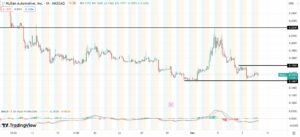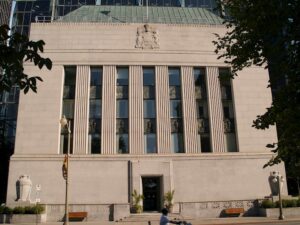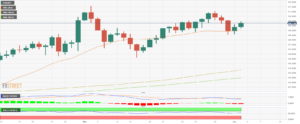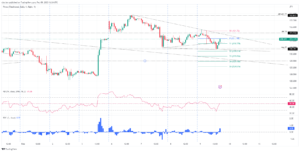
The UK Economic Data Overview
The British economic calendar is all set to entertain the Cable traders during the early hours of Wednesday, at 06:00 GMT with the monthly release of April 2023 Gross Domestic Product (GDP) figures. Also increasing the importance of that time are Trade Balance and Industrial Production details for the stated period.
It’s worth noting that the previous day’s upbeat UK jobs report and hawkish Bank of England (BoE) concerns also add importance to today’s British data dump. However, the presence of the Federal Open Market Committee (FOMC) monetary policy meeting can restrict the market’s reaction to the macros.
Having witnessed a contraction of 0.3% in economic activities during March 2023, market players will be interested in April month’s GDP figures to defy the fears of an economic slowdown. That said, forecasts suggest that the UK GDP will mark a 0.2% improvement in April’s economic activities and bolster the hawkish BoE bias.
GBP/USD traders also await the Index of Services (3M/3M) for the same period, likely to decline to reprint the 0.1% mark, for further insight.
Meanwhile, Manufacturing Production, which makes up around 80% of total industrial production, is expected to disappoint with -0.2% MoM figures for April, compared to 0.7% prior. Also, the total Industrial Production may fall by 0.1% versus the previous expansion of 0.7% during April.
Considering the yearly figures, the Industrial Production for April is expected to have dropped by -1.7% YoY versus -2.0% previous while the Manufacturing Production is anticipated to have improved to -0.9% in the reported month versus -1.3% the last.
Separately, the UK Trade Balance; non-EU for February will be reported at the same time and is likely to worsen to £-6,509B versus the prior readings of £-5,458B.
How could affect GBP/USD?
GBP/USD fades upside momentum as the traders recheck the hawkish signals flashed via the US inflation and the UK employment data the previous day. In doing so, the Cable pair aptly portrays the Fed day anxiety around the 1.2600 round figure after rising the most in a week the previous day, making rounds to a five-week high of late.
The Cable pair’s latest gains could be linked to the US Dollar’s broad-based weakness amid downbeat US inflation and increasing odds of the Federal Reserve’s (Fed) policy pivot. That said, the previous day’s strong job numbers and hawkish comments from the BoE officials, as well as inflation pressure in the UK, keep the GBP/USD buyers hopeful.
That said, a positive surprise from the scheduled British statistics may, however, won’t be enough to keep the GBP/USD firmer amid the looming Fed decision. Hence, a kneejerk bounce in the Cable price could be witnessed in the case of the firmer UK data.
Technically, the overbought RSI conditions and an ascending resistance line from June 01, around 1.2615 by the press time, quickly followed by the previous monthly high of near 1.2625, prod the GBP/USD bulls. Also restricting the Cable pair’s upside is the Doji candlestick on the four-hour play marked at the multi-day high, suggesting a pullback in prices.
Key notes
GBP/USD grinds below 1.2625 hurdle ahead of UK data dump, FOMC
GBP/USD Price Analysis: Cable bulls stall near 1.2600, pullback hinges on UK GDP, Fed
About the UK Economic Data
The Gross Domestic Product released by the Office for National Statistics (ONS) is a measure of the total value of all goods and services produced by the UK. The GDP is considered a broad measure of the UK's economic activity. Generally speaking, a rising trend has a positive effect on the GBP, while a falling trend is seen as negative (or bearish).
The Manufacturing Production released by the Office for National Statistics (ONS) measures the manufacturing output. Manufacturing Production is significant as a short-term indicator of the strength of UK manufacturing activity that dominates a large part of total GDP. A high reading is seen as positive (or bullish) for the GBP, while a low reading is seen as negative (or bearish).
The trade balance released by the Office for National Statistics (ONS) is a balance between exports and imports of goods. A positive value shows a trade surplus, while a negative value shows a trade deficit. It is an event that generates some volatility for the GBP.
- SEO Powered Content & PR Distribution. Get Amplified Today.
- EVM Finance. Unified Interface for Decentralized Finance. Access Here.
- Quantum Media Group. IR/PR Amplified. Access Here.
- PlatoAiStream. Web3 Data Intelligence. Knowledge Amplified. Access Here.
- Source: https://www.fxstreet.com/news/when-is-the-uk-gdp-and-how-could-it-affect-gbp-usd-202306140500
- :has
- :is
- $UP
- 1
- 2%
- 2023
- a
- activities
- activity
- add
- affect
- After
- ahead
- All
- also
- Amid
- an
- analysis
- and
- Anticipated
- Anxiety
- April
- ARE
- around
- AS
- At
- await
- Balance
- BE
- bearish
- below
- between
- bias
- BoE
- bolster
- Bounce
- British
- broad
- broad-based
- Bullish
- Bulls
- buyers
- by
- cable
- Calendar
- CAN
- case
- comments
- compared
- Concerns
- conditions
- considered
- contraction
- could
- data
- day
- decision
- Decline
- DEFICIT
- details
- doing
- Domestic
- dominates
- dropped
- dump
- during
- Early
- Economic
- effect
- employment
- enough
- entertain
- Event
- expansion
- expected
- exports
- Fades
- Fall
- Falling
- fears
- February
- Fed
- Federal
- Federal Reserve’s
- Figure
- Figures
- followed
- FOMC
- For
- forecasts
- from
- further
- Gains
- GBP
- GBP/USD
- GDP
- generally
- generates
- GMT
- goods
- gross
- Have
- Hawkish
- hence
- High
- hopeful
- HOURS
- How
- However
- HTTPS
- importance
- imports
- improved
- improvement
- in
- increasing
- index
- Indicator
- industrial
- Industrial Production
- inflation
- insight
- interested
- IT
- Job
- Jobs
- jobs report
- jpg
- june
- Keep
- large
- Last
- Late
- latest
- likely
- Line
- linked
- looming
- Low
- macros
- MAKES
- Making
- manufacturing
- March
- mark
- marked
- Market
- May..
- measure
- measures
- meeting
- mom
- Momentum
- Month
- monthly
- monthly high
- most
- National
- Near
- negative
- noting
- numbers
- Odds
- of
- Office
- officials
- on
- open
- or
- output
- pair
- part
- period
- Pivot
- plato
- Plato Data Intelligence
- PlatoData
- Play
- players
- policy
- portrays
- positive
- presence
- press
- pressure
- previous
- price
- Price Analysis
- Prices
- Prior
- Produced
- Product
- Production
- pullback
- quickly
- reaction
- Reading
- release
- released
- report
- Reported
- reserves
- Resistance
- restrict
- restricting
- rising
- round
- rounds
- rsi
- s
- Said
- same
- scheduled
- seen
- Services
- set
- short-term
- Shows
- signals
- significant
- Slowdown
- So
- speaking
- stated
- statistics
- strength
- strong
- suggest
- surplus
- surprise
- that
- The
- the Fed
- the UK
- time
- to
- today’s
- Total
- trade
- Traders
- Trend
- Uk
- UK Employment
- UK GDP
- Upside
- us
- us inflation
- value
- Versus
- via
- weakness
- Wednesday
- week
- WELL
- when
- which
- while
- will
- with
- witnessed
- worsen
- worth
- yearly
- zephyrnet












